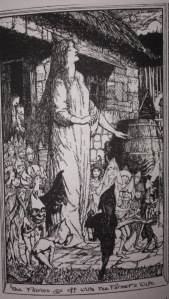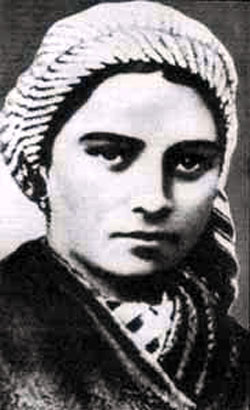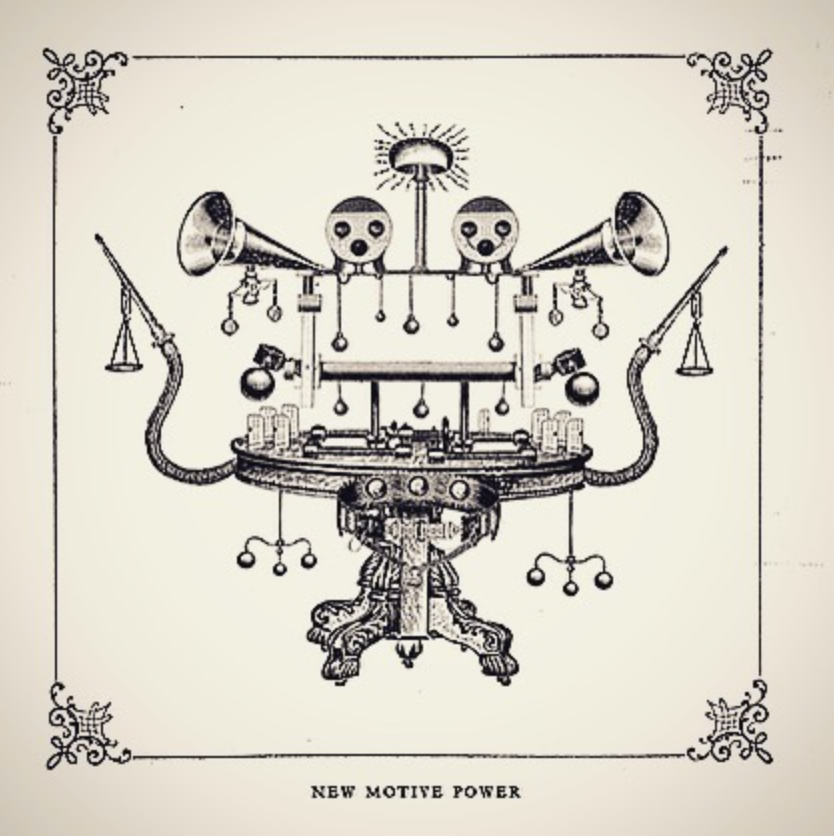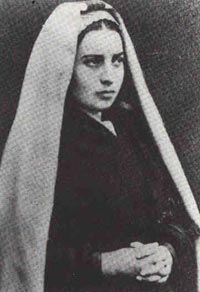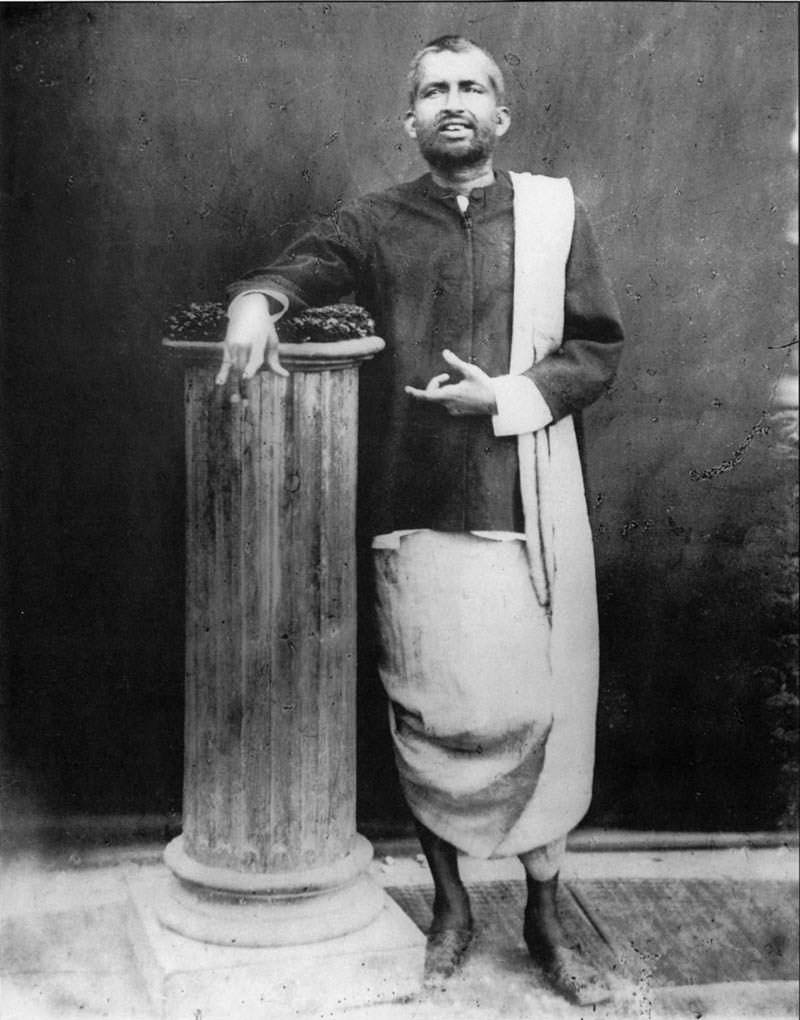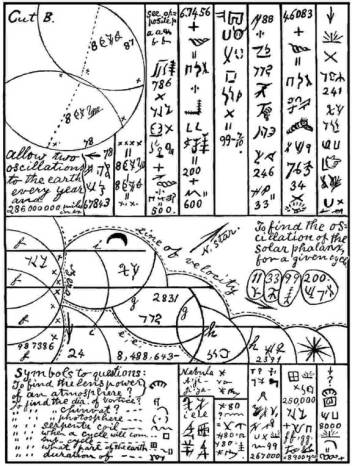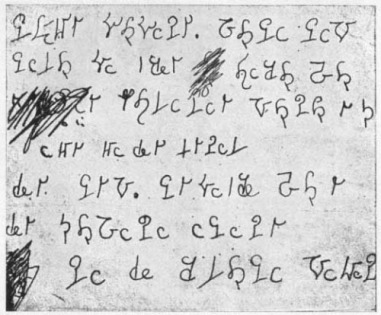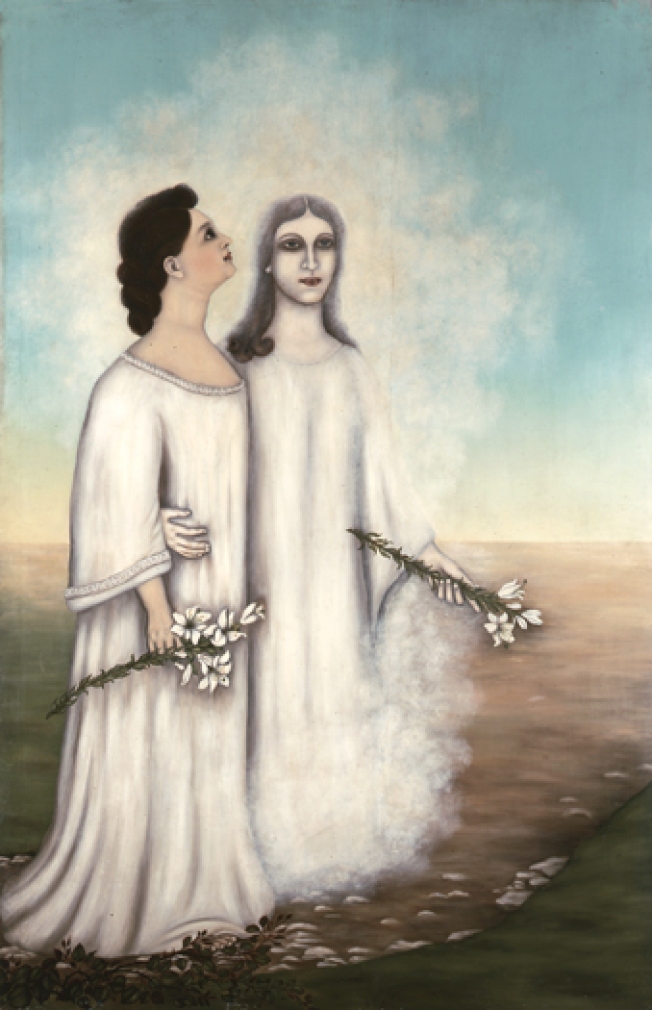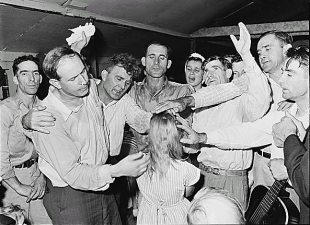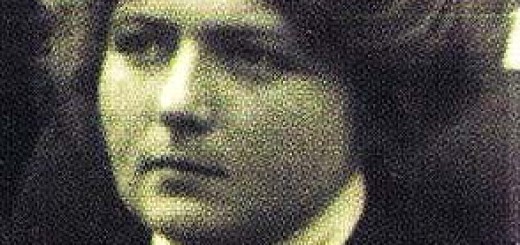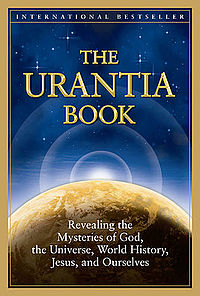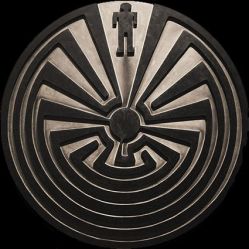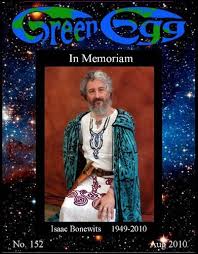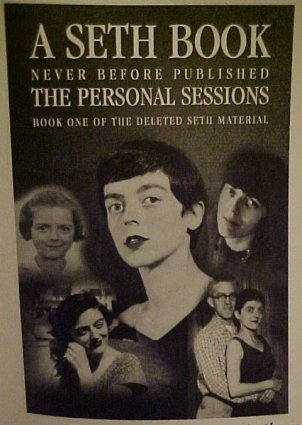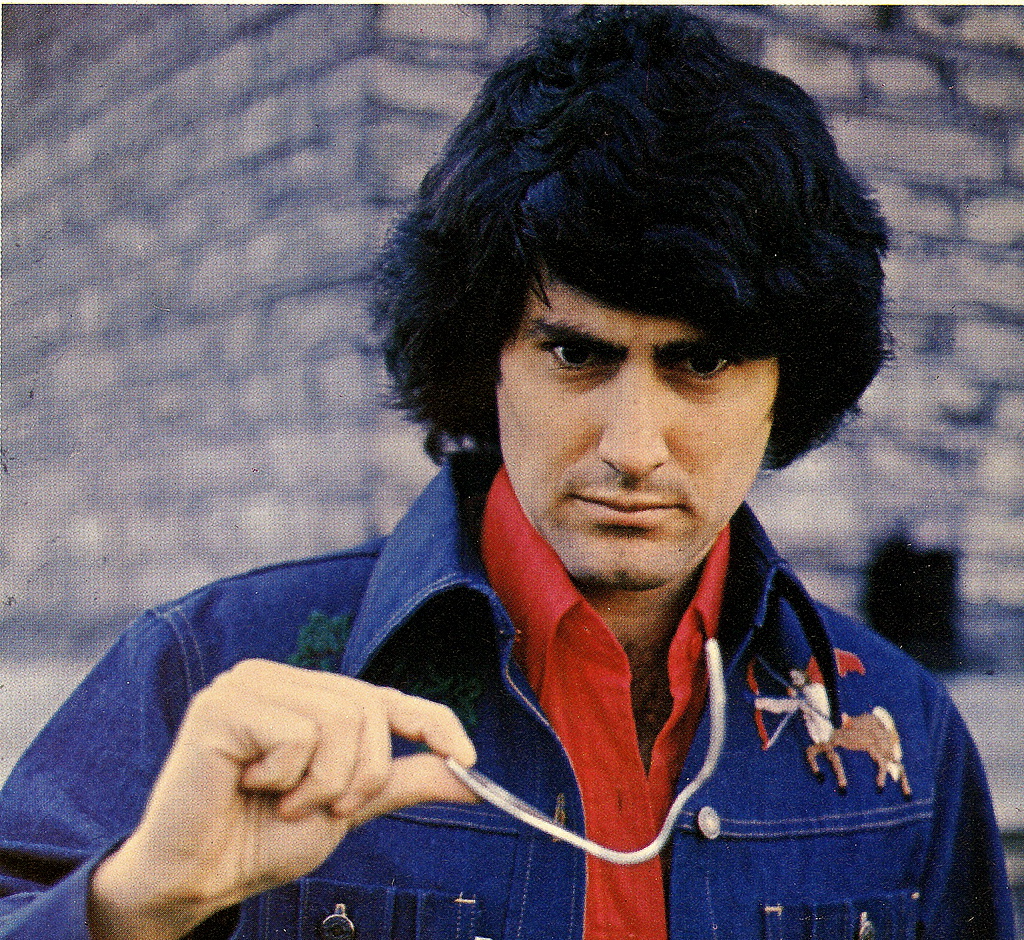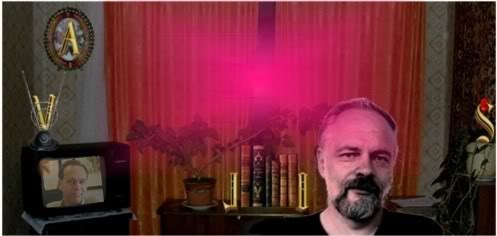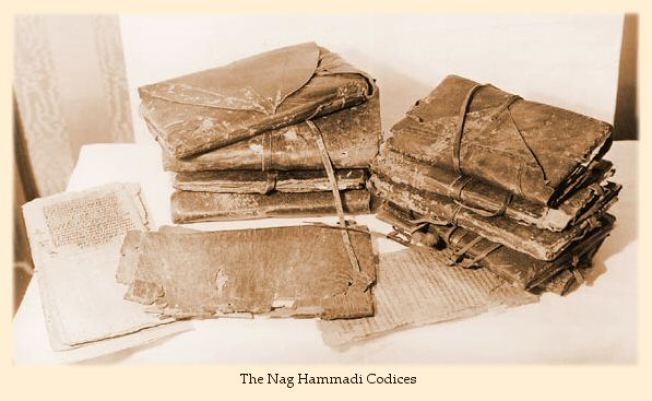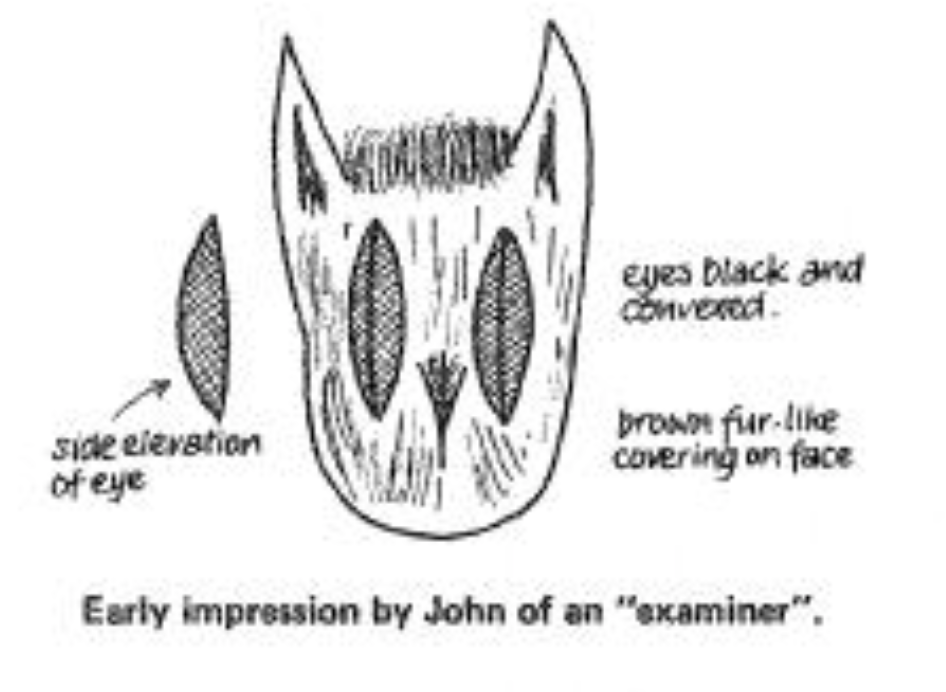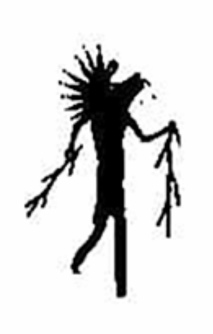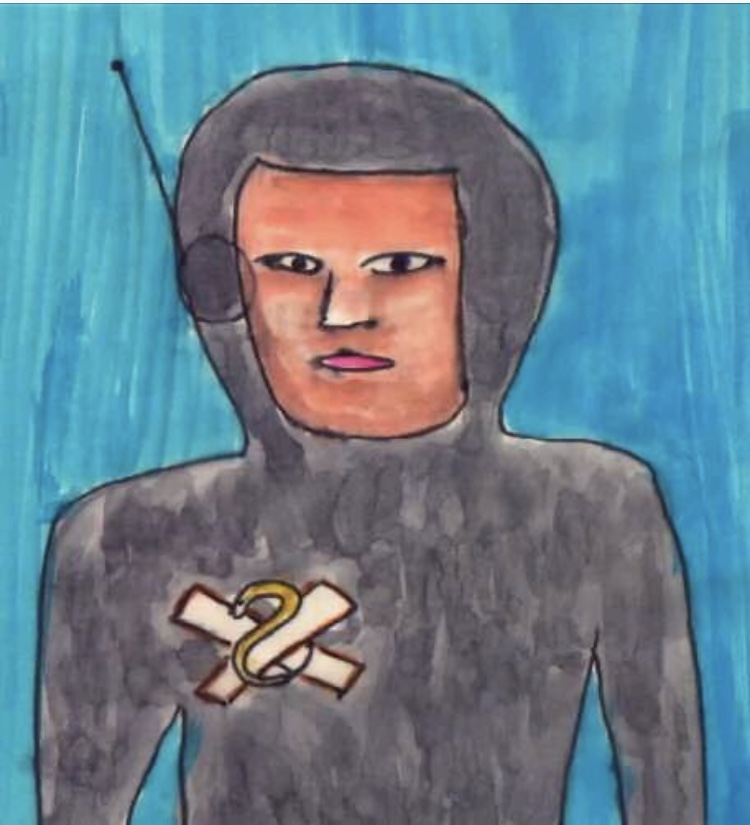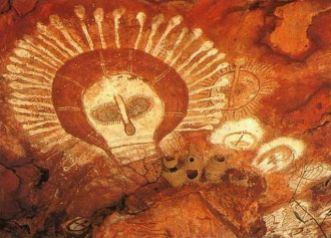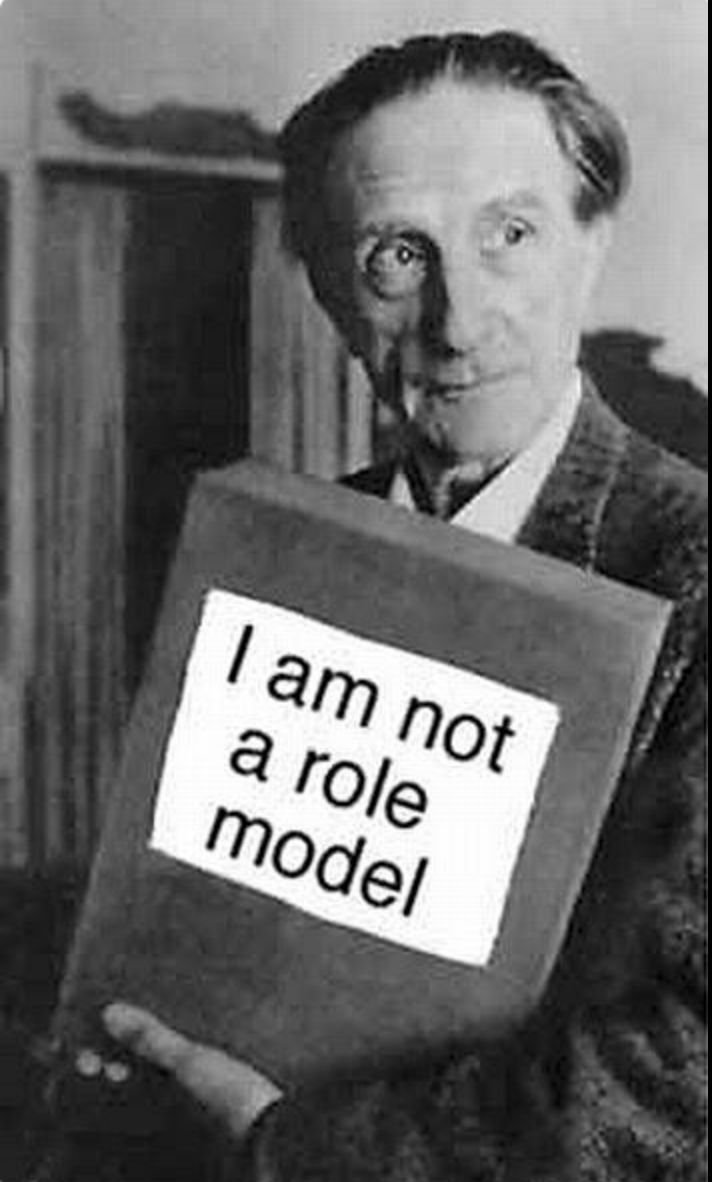The following collection of Anomalous Light Phenomena (ALP) reports differs from most “Otherworldly” paranormal manifestations (such as UFOs or Near Death Experiences [NDEs]) in that they are disconnected from any visible source, occur mostly indoors, and are linked with the percipient’s emotional and mental state. Except for a few instances, they do not involve anything other than a spiritual presence.
Like many UFO interactions, they have components that flout our subjective/objective and physical/mental boundaries. As we’ll see, they very often occur at times of crisis or transition in a person’s life—and also frequently have positive aftereffects.
THE STUDIES
To date, there have been only two studies of what we could strictly call “encounters with unusual or anomalous illumination”: the books Lightforms by Mark Fox and Light Changes: Experiences in the Presence of Transforming Light by Dr. Annekatrin Puhle.[2]
These books treat two independent data sets consisting of firsthand stories. Fox’s data derives from Sir Alistair Hardy’s Religious Experience Research Center (RERC). Dr. Puhle’s analysis was the result of historical research and a personal solicitation to friends and the public for such experiences.
Both investigators eschewed reports of strange lights in the sky, straightforward NDE accounts, or any in which mental illness was indicated.
Puhle’s survey of over 800 self-reported incidents presented positive personality transformations in the majority of cases.[3] Her survey found a distribution of, as she put it,
-life crisis
-light intrusion
-psychological transformation.[5]
Mark Fox’s separate analysis of the RERC database revealed the structure:
-personal crisis
-tipping point
-anomalous light experience
-“positive fruits,” that is, a spiritual transformation or improvement in the quality of the percipient’s life.
This sequence occurred in a majority of the cases he studied.[4] Half the total experiences involved this structure.
Fox concludes that NDEs involving the “dark tunnel with a distant light” or ones that take place in “light-worlds” should be considered a subset of ALP; that is, people with no imminent threat to their lives account for the vast majority of light-form encounters, many which nevertheless portend a sort of egoic death.[6]
Fox points out that there is no “cultural contamination” present in the RERC cases he studied—that is, there was no priming foreknowledge which could have led the percipients to expect such specific experiences, beyond historical, religious tales of transforming light. Hardy’s RERC database was compiled prior to Raymond Moody’s first book Life After Life, which introduced many of the Near-Death Experience features to audiences worldwide.[7] The RERC stories constitute a database of very similar experiences that is independent of Moody’s collection and the NDE studies that came after.[8]
Fox and Puhle found it difficult to categorize their databases: do they separate by the light’s shape? Intensity? Color? By the experience’s context? Or the situations in which the lights appeared? The after-effects?.
A VAST VARIETY
Here are some of the many structures which light experiences may take. All quotations preserve the syntax and spelling in the original reports:
-The light may be encountered as a ray or “stream” that is localized in space near the percipient:
One evening, whilst sitting alone in our London flat, after having dined (but not wined) I was reading a book of R. Tagore, when I suddenly began to have what I can best describe as a great upsurge of feeling, which made me put my book down and listen very intently. Then I remember standing up, and realizing how clear and bright everything seemed around me. I was very elated and light in myself, and then the atmosphere seemed sort of electric and charged with suspense; then I became conscious of this strong visual sensation of a very fast flowing current, or stream of light, way out above me and beneath that a second stream narrower, but flowing in the same direction, with a gap between them. It seemed that I then cognized that the slower and smaller current somehow, symbolically represented my own life stream. Everything was very silent and intense, and I remember feeling extremely peaceful. After this there came this very strong physical sensation, as if I was sort of taken out of myself, turned around (or inside out) and was facing myself, but was being carried along in the direction of the smaller stream that was above me, but below the main stream. Like me on two levels, but facing each other and in some way connected. It is very difficult, practically impossible, to describe such a unique and physical experience. All I knew was it was a gripping reality. All the time there was this great intensification of light and energy and outline of objects in the room, and this wonderful feeling that I had somehow become a part of everything, and attached to something. At the same time I realize that strength and understanding were being given to me together with this new direction I seem to be flowing in. Eventually I felt a settling down and acceptance of what was happening, and after quite a few hours went to my bedroom thinking to get some sleep and rest, but those two streams seem to follow over and above me wherever I went, and the conviction that I would never truly be alone again came very forcefully (and it has always remained) as had a memory of that strange but funny two levels, inside out, sort of sensation, which still comes to me if I am thinking intensely or with a lot of people under pressure. Eventually I suppose I got some sleep, but next morning it was still a very gripping reality, and I could not settle to anything so I remember thinking I would go for a walk and see what happened, but it still all went with me. This lightness, and I felt so free and ridiculously happy and excited. I cannot think looking back on it how one behaved outwardly as usual, but that was the strange thing about it all it all seems so natural. The next day I had to go back to my family in the country and keep this enormous secret to myself (there when years to come my daughters all said they had about that time noticed an enormous change in me). [9]
-Sometimes it is a ray that their consciousness may enter, causing a cascade of “information” or images. A 53 old year woman describes how one day:
I was aware of knowing I had access to knowledge, that the answers were there and available to me. I was conscious of a sense of tranquility through some sort of inward strength…Through an upstairs window (of my old Georgian house) I was vividly aware of an image of strong white light stretching into the far distance between two straight lines—it could almost be described as a shaft of dazzling brightness, but it didn’t seem to get any narrower as it went out of my sight. There was no movement in it, it was more like a straight road of blinding white light and with the image of it came the feeling of a new dimension of perception through which I could have confidence in my intuition, and through which I should see everything more clearly. I think I remember thinking this is what people experience when they try to explain why they have a certain unshakable faith through a religious experience, but that was certainly not the form my “enlightenment” was taking…It was as if order was being created out of chaos in some part of my mind, then how soon I can’t remember I found my head was crowded with startlingly clear pictures of places and events and people. It was as though floodgates had opened on a vast store of forgot memories. One realized suddenly that, after all, one had both a vivid imagination and a good memory. Coupled with all this and controlling it all was the strong feeling of having a creative urge to write using all this fascinating and unfamiliar material which seemed to want to flow out of my mind. Strangely it all seemed bottled up somewhere under my diaphragm! It was all too new to me to want to do anything except enjoy it and to try to make some sort of pattern from the myriad pieces. At the same time it was all familiar as if I knew that this was the natural outcome of all my reactions and impressions throughout my life…The next day I felt very uplifted in spirit, not unlike being inebriated or perhaps having the unexpected news of a large inheritance. [10]
-Some rays of light (nearly all described as golden in color) “pierce” the person, causing an influx of light and the appearance of “supernatural” beings:
After receiving the sacrament, I went back to kneel in my pew. I became aware of a golden ray of light coming down directly at me. It flooded my whole being so utterly that I felt split into millions of atoms, as if each atom was surrounded by this golden light… Like being infiltrated by it. I no longer felt as a body of flesh but as if this “is” and not me, and yet I “am” too for I can feel it glowing as if with a living warmth. I looked up the length of lights and saw at the top what appeared to be a concentrated mass of itself with about a dozen people standing within. The position of this group was at about half the height of the church and slightly to the right… As if not to disturb anything going on at the main altar. I went up the path of light. This “concentration” at the top seemed to hide and blur those in the group so that I could not identify anyone. I was given to know that they are enfolded in the Love of God, that this is their life force; for a brief moment I felt this too as something indescribably intense and lovely; & it was gloriously beyond my capacity to have imagined, and not of this earth. I came back suddenly to kneeling in my pew again. I should think only a few seconds of our time had elapsed.[11]
-A brightening or enhancement of intensity of the landscape (or an interior) where no known source of illumination could possibly have produced it, often accompanied by a sense of stillness and perception of the “inner workings” of the universe or expansion of consciousness. Here are two outdoor examples:
I was in the garden of my parents’ home in Sussex and aged 19 at the time. I was standing near the trunk of an oak tree looking down at a bank and the fresh green leaves of wild violets and other small plants on the ground. I was experiencing thoughts of joy and love towards all the small and great manifestations of nature around me in that quiet place. As I watched, there was quite quickly a silent change. I looked with astonishment at the leaves and blades of grass. They had taken on what appeared to be an internal light of their own. They shone with a quiet radiance, and so did everything within my field of vision. I stood dead still, not daring to move. I felt tremendously uplifted and thankful as I watched this extraordinary living light which seemed also to have gentle sounds associated with it. It was as if all my senses had suddenly become more acute and as if I could hear the leaves growing. I noticed that all the colours were enhanced and brighter, and more alive than normal. The impression received was that I was looking at something real and fundamental and not just imagined by me. I do not know whether it lasted for seconds or minutes before, equally without warning, everything quietly returned to the relative dullness of its material exterior.
—-
I have had a few slight and perhaps doubtful psychic experiences but one was significant and very wonderful. During the war we were stationed at Laggan House, Ballantrae, Scotland. In August 1942 I had been in a darkish hut checking store inventories. I left the hut and walk down a drive with a double line of trees down each side. Halfway down the drive I became aware of the great beauty of the late afternoon scene. To my left was a fairly wide valley and then a hill. To my surprise the valley seemed quite quickly to fill with a great light, living iridescent rainbow coloured light. The phenomena was huge, towering in an oval form up into the sky. Its center was a living dense coloured gold, the colors got fainter to the edges, the whole was ringed with a cloud of silver white light…The “vision” provoked some very warm responsive feeling in me. It lasted some minutes then faded. It in no way disturbed me. It seemed quite natural.[12]
-On the other hand, sometimes a room can fade into a brilliance,[13] at times showing the percipient an Otherworld beyond:
In 1956 my oldest son was drowned at the age of five years. My love for him was the most wonderful thing in my life. Some few days after his death, in my great sorrow, I was sitting alone in the study of my mother’s house and I prayed to God with all my heart, to ask him, when so greater love existed between two people, to give me some sign of it being eternal and indestructible, as in fact I believed it to be. I also prayed strongly to my son to “go on” with his new life and not wait for me to join him. Suddenly I knew that he was standing beside me on the hearthrug, so strong with this feeling that I put my hands to my eyes as though to open them in an effort to see him. I was at once surrounded by such a feeling of peace and happiness that I had never known before or since. At the same time I felt myself lifted up from the chair and my body became quite weightless. Indeed, the walls of the room dissolved themselves and withdrew into the distance as though they were quite unreal like a stage set and my son stood at the end of a great lane of shimmering light with beautiful colors, leading into infinite space into another dimension which I felt was beyond my earthly eyes to see. It was, as though for a moment or two, I glimpsed the “other world” in which he now lived. At the same time I was in a way “sore afraid”. Far from vanishing instantly, this “vision” faded away very gradually and the walls and things in the room resumed their normal experience, and closing me once again into their narrow space and it only disappeared entirely on someone entering the room. I would like to say that what happened to me was entirely unexpected and I am convinced that it was no figment of my imagination. One extraordinary thing was the relation of “light,” the light in which I saw my son standing in the lightness (weightlessness) of my own body.[14]
A grieving widow recounted:
In the early part of 1943 I received a wonderful vision. I had gone to my bedroom and flung myself on the bed and I implored God, if there was a God, to give me a sign. And lo and behold I felt my neck being raised. My tears were streaming down for my eyes, and they were being wiped away. Then the four walls of the bedroom vanished, and in its place was a wonderful golden light such as I’ve never seen on earth. It so transported me that it has made a great difference to me all my life, for well-nigh forty years. So curious, the golden light has stayed with me. And in that golden light I saw five people. They were not angels; they were human beings, but recognized by me; just glorified human beings. And that wonderful vision has never left me. And though I did not see my husband I knew that he was in God’s hands.[15]
–Time elongation or a sense of the absence of time often occurs in these experiences. For instance, a man wrote about an experience that occurred to him while a teenager:
At that time I was wont to spend much time by myself, introspectively. Many factors in my life contributed to this—tension between my father and mother, with me more or less forced to side with my mother out of fear of my father; problems with paying attention to my schoolwork related to the previous situation (I seemed to be emotionally preoccupied by it) and confusion within my first relationship with a girl. A greenstick fracture of the heart—as someone called it! Also, from my mother, I had found myself possessed of a deep interest in religious matters, in particular, the nature of Truth and Love and how to achieve onto them…So, on the day in point of remembrance, I was alone in unspoilt, wild, natural and open surroundings. At some point I felt the need of a rest. Throwing my bike into some heather I lay down, closed my eyes and began to lap up the warmth of the sun. There was no specific trigger for the experience that followed that I can recall other than the general disposition of my mind and the things it was preoccupied with. But it seemed as if I drifted out into some great light and became aware of some Being or presence which I call God. I found my awareness flooded, however, with a perfect and total realization of the interdependence of God in my Self. They were, in some absolute and imperative way, necessary to the existence of each other (The emotions that I felt were more of utter wonder & joy, amazement & delight). I do not think the time that elapsed during this experience, measured by the clock, could have been more than a minute, if that, but the vision that I had perceived encompassed an awareness of time and space like nothing I had known before…The realization was so strong that it stayed with me when I became aware once more of where I was.[16]
Beams of light may be connected with synchronicities.[17]
-Some amorphous lights are identified as angels that appear in times of distress and deliver telepathic or audible messages while remaining unperceived by others in the vicinity.[18]
– Some are experienced as classic winged beings (angels)[19] or numinous humanoids who are described as angelic (as in the grieving widow’s account above).[20] Puhle includes an account of this latter kind, told to her by the granddaughter of a dying woman in Sweden:
…(the grandmother’s) goal now was to prepare herself for the journey into the next realm. She said she was ready anytime…She told me that she wanted to share a strange experience that she had been having since she had moved to the rest home. It is a fascinating and beautiful story.
Her first remark before she started her narration was, “I don’t expect anyone to really believe this, and I myself know that sounds impossible, but it is true and has happened four or five times to me. It is not the product of senility or delusions.” As I listened, I felt strongly that grandma Ruthie had experienced all that she was relating.
Three or four times a week, she was awakened by “something” in the early morning hours. She could see two figures standing at the foot of her bed who were dressed in white with a golden light around them. They introduced themselves as a brother and sister team. Their names were Sylvia and Edwin, they told her, and they made the nightly rounds of many hospitals and nursing homes to comfort, care for, and console any patient in need.
Grandma Ruthie sensed a deep feeling of peace and love as she looked and listened. These two “helpers” produced a cover of soft gossamer, a shining, gauzelike material, with which they wrapped any person who was lonely, cold, or unhappy. This material had no weight but was extremely warm and comforting. Within minutes, the patient was warm, dry, relaxed, and sound asleep. After waving goodbye with a smile and a “God bless,” Sylvia and Edwin went up four small steps and disappeared.
I had to ask, what happened to the sheer gossamer coverlet, and did the attendance and nurses notice it when they arrived in the morning? Grandma Ruthie’s answer was: “as morning comes and dawn breaks, the covers seem to disintegrate and are gone when they are no longer needed. Besides they wouldn’t be noticed by anybody who didn’t believe in these things and wouldn’t be looking for them.”
There is no doubt in my mind that it is all true. It wasn’t many weeks after our talk that she made her transition.[21]
-Lights that appear as diffuse clouds that are recognized via telepathic messages as that of the passed on:[22]
I remember waking up, and almost instantaneously, this amazingly bright blue-white light was hovering near the ceiling. It was a large oval shape, about 4 feet tall and 3 feet wide.
As I was looking at it, I was told telepathically that it was my maternal grandfather, who had just passed on to the next world. I remember thinking this was really strange because I had no idea he had been ill. In fact, I didn’t have any close association with this man. He was a little ornery and had a poor relationship with other members of the family.
The light lingered for a while, and after it left I looked at the clock and discovered it was 2:17 AM. Then I went back to sleep.
The following morning my sister knocked on my front door. I knew why she had come and said, “you came to tell me that grandpa died, didn’t you?” She looked puzzled and said, “mom called to tell us that he died of a heart attack at about 2:30 AM.” I said, “no it was 2:17 AM”, and I told her what had happened.[23]
Diffuse glowing clouds can also be interpreted as angels in the context of their occurrence in places of worship.[24]
Sometimes the light form is sensed to possess intention or personality even though it has no humanoid shape[25]and may even audibly “speak”:[26]
At the time I was an active member and a cofounder of the only existing group in Austria of a spiritual community of American origin. As part of the annual activities the European representative, accompanied by some followers, visited for a weekend to celebrate together. It was during that visit, on this Saturday in May, that the event occurred.
The morning celebration over, I stayed to bring the room back into order: lining up chairs and picking up litter. The “vibration,” so familiar to me, commonly builds up during so-called “classes,” and was at the time exceptionally strong in the room. This enhanced my feeling of reverence to a level I had not experienced before.
Suddenly, a voice spoke to me unexpectedly, commanding me to take a picture of the room. The voice was clear and decisive. The words formed in my mind, which means it was not an audible voice. It would not have mattered in the least had it been an audible voice, as there was nobody else in the room. Nevertheless, the voice preferred internal communication, perhaps to avoid alarming me?
I argued impulsively with the voice that it did not make any sense for me to take a picture of a room with no one in it! I knew the room, why should I take a picture of it, I wondered? The voice did not give in, insisting I take a picture. This time I silently agreed. I went downstairs to my room to get the camera. Both on the way up and down I did not meet anyone, and somehow managed to not continue arguing with myself about the occurrence. I took the requested picture!… Click.
That weekend we took a lot of pictures, my then husband and I. With so much going on, I totally forgot to tell my husband, or anyone else, about the voice I’d heard. Some days later, the pictures came back from the shop. My husband and I looked through them, enjoying the memories of that special weekend. “What is that?” I asked, stunned by one of the pictures. It was the one the voice had requested me to take! It had an abnormally strong ray or beam of light made visible, the ray coming directly out of one of the portraits hanging on the room’s main wall – an image of the founder of our spiritual community, whom we affectionately referred to as our beloved “Daddy.”
The detailed memory of the coincidence returned. This light phenomenon made me tremble in awe, giving me goosebumps. Deep gratitude replaced my sense of shame at having questioned the voice. The weekend’s festivities have been officially dedicated to her Beloved Daddy. Was it his voice that had spoken to me?
It would be easy to try to rationalize this incredible light phenomenon away by arguing it could have been a technical glitch introduced during development. Examining the picture in detail and seeing how the light ray emerges out of the portrait, I came to the conclusion that this was definitely not a development error. How could one explain that I had heard a voice and then take a picture of a strong ray of light? I cannot prove it and don’t wish to either. I know what I felt and heard, and can see what the picture captured. The exceptionally high energy level in the room that day had become visible in the form of this incredible light ray. I am sure about it. It is my firm conviction that my deep reverence allowed me to receive the gift of this extraordinary experience.[27]
-At times they affect the percipient in ways analogous to or evoking the imagery in esoteric religious practices, such as this account from Puhle:
One evening, I wanted to go into my small room and was alarmed to see a bright figure with a curious, penetrating expression standing by the wall. It was white, and look like an angel. I was very frightened and went back to my son’s room and told him what I had seen. He went into the room to check if he could also see the apparition and told me I could go in without being afraid.
I did so, and saw that the angel stood at another wall. Its face was now veiled – making it look like a white disc – and I felt that this had been done to take my fear away. I lay down on my duvet and waited to see if this figure wanted anything from me. Then I saw that over my body, below my chest—about the level of the solar plexus and the heart chakra—a flower, a calyx similar to a tulip, had taken shape. The color was salmon-pink, and the tulip began to revolve faster and faster, spreading a pink light around the room. I assumed that this had something to do with the angel, since the whole room became pink. It was a small room and there was so much pink that I could not even recognize the edges of the furniture. This lasted for about 20 minutes, then I fell asleep.
– Elisabeth Johnson, first-hand account, Gothenburg, Sweden 12 February 2008.[28]
-People experiencing a sense of love and help from the lightform that is inferred to cause sudden physical healing:[29]
Ten years ago I had a major operation and I had been warned that I would feel ill for a few days after. During the second night after the operation I was muttering to myself “I feel so ill – I feel so ill.” On opening my eyes I saw the ward doctor, night sister and nurses standing at the foot of my bed. I asked the doctor the time and was told it was 2:30 AM. I then said “I’m going to die, aren’t I?” but was assured by him that he had worked too hard to let me die now. This didn’t convince me, feeling so desperately ill, then I glanced at the corner of the ward and saw the most beautiful brilliant light I have ever seen—it was suspended from the ceiling about 6 feet long, about 3 feet wide. I couldn’t take my eyes from the sight–never have I seen anything so beautiful. Such a bright soft light and somehow so comforting. I couldn’t find any particular shape–no figure–yet I am absolutely certain that I was dying at that time and that it was God who had shown himself to me. When the surgeon visited with me later that morning he was astounded to find such a great improvement after such a big operation. He always referred to me as his prize patient, but it’s my believe that God himself came and helped me through that dangerous time. When I was better I try to discover how the light was caused but could find nothing whatever. It was a visitation, of that I am convinced.[30]
Another healing account is this, from a 65-year-old woman who at the time of her experience was diagnosed with an incurable ankle ailment:
I was dumbfounded at…The prospect of walking about on sticks for ever perhaps, and so in my prayers each night and morning I included my left ankle, and to help things along, as I thought, I went down to Stokes Bay on every possible occasion to swim in the sea, where I would first swim for an hour or so, and afterwards relax in the chair in my Beach Hut and meditate.
After five months of this routine, and on the 15 October 1967, a most wonderful thing happened. After my swim and whilst relaxing and meditating with my eyes closed, I saw what seemed to be a round luminous, somewhat diffused light and a beautiful azure background approaching me, which disappeared on reaching my head. I opened my eyes and wondered for a while at the beautiful colors, but as I was beginning to feel cold I decided to get dressed, lock up and go home. You can imagine my great joy when I saw that there was no swelling, discoloration and no pain in my left ankle.[31]
In contrast there are a few without a “loving” aspect (in fact, inspiring fear) that one might say synchronistically presage the recovery of a sick person.[32]
–Out of Body Experience (OBE)-like events in which the entire landscape is illuminated and show the experient parts of it unknown to them until they later explore them, like this example from the RERC database. It took place in 1933 to a woman who had suffered a miscarriage three months previously. Her feelings were near despair as she was walking down a country road. Then:
Suddenly I was enveloped (I can only call at that) and lifted high above the high bank and tall hedge on top, as though by unseen and unfelt hands, enveloped in a wonderful living brilliant light. I saw a small deserted quarry or cutting below, but everything, plants, bushes, even the stones on the far side were exuding a pulsating life and bathed in an unearthly bright golden light. It seemed an eternity I was held aloft with the most wonderful glow of peace and awareness of the wonder of God.
Then I finally found myself standing on the road and looked to see if anyone had seen me, it was so vivid, no one was in sight. I walked on to the shops, but with an unutterable feeling of peace within me. My longing for another child just disappeared.
A few days afterwards, as the bank and the hedge were too high to look over, I found by going up a side path I could look down, and it was as I had seen it, only the scene was just normal. We were newcomers to the area, and I had never wondered what was behind a high bank and hedge.[33]
-Lights that occur during OBEs associated with the passed-on:[34]
“Mrs. H. had OBE’s several times in her sleep. She was always aware that her body was lying in bed and that it was her mind or consciousness which was somewhere else. What makes the following case, reported to John Poynton, special is that it involves an experience she shared with her daughter. Both met when Mrs. H., the mother, was having an OBE while her daughter was dreaming. They found out about this nocturnal meeting when, two weeks after Mrs. H.’s OBE, her daughter related her dream to her:”
The experiences
The out of body experience, which my daughter and I shared, is actually centered on my cousin’s young son, who died unexpectedly when he was 20 years old. My daughter and James as we will call him, were not perhaps close friends, but that used to hang out occasionally.
My daughters room faced towards the door leading into my room, with the top of the stairway landing separating the rooms. In my experience, I stood beside my bed and I could hear my daughter talking to someone. It was the middle of the night and I knew nobody should be in my daughter’s room. I thought I was imagining things at first, then I heard my daughters voice again. I made my way over to my bedroom door and opened it. I looked into my daughter’s room. The door was open and the light was on. I entered her room and made my way over towards her bed. She was lying propped up with her pillows. I looked around her room to see whom she had been talking to but I could see nobody. I turned to my daughter and asked who had been in her room, as I had heard her speaking to someone. She replied she had been talking to James.
I knew she had been upset by the sudden death of James, so as gently as I could I explained that James was dead, and that she must have been dreaming and talking in her sleep. She denied this and said that James had told her that everyone thought he was dead but he wasn’t really dead; he was still alive. I was amazed when suddenly she shouted out into the empty room: “James, show yourself, it’s just my mum, you don’t have to hide from her.”
I stood for a few seconds after this outburst, wondering how to help my daughter to calm down. Just as I was thinking this, my eyes were drawn to the ceiling above the foot of her bed. What I saw was incredible. There were about five or six round, shining lights, all different colors, revolving around the ceiling. I had never seen anything so beautiful. The colors seemed so bright, as if they were alive. Tears streamed down my face as I repeated over and over to myself: “it’s true, it’s true, there is life after death.”
The following morning I woke up in bed, struggling to believe that this is been just a very vivid dream. It had all seemed so real. Eventually as the day wore on, the dream faded into the background, until eventually I stopped thinking about it. It was about a fortnight later when I was talking to my daughter that I was stunned when she related a dream that she had concerning James. I was even more amazed when she related the conversation I had with her in the dream and also the bright colors revolving around the ceiling. I asked my daughter (a few years later) to describe her version of the dream, and she agreed to do so. This is her version:
It happened about four years ago. It was a dream that I don’t think I’ll ever forget. My older cousin and I were friends, and his tragic death at 20 did upset me very much.
I wasn’t thinking about my cousin before I fell asleep that night, it was weird. It was a dream, but it felt so real. I was sleeping in my bed at my mother’s house, when my cousin came and sat down beside me on my bed, saying my name repeatedly until I awoke. When I eventually came around there were lights in my room and sitting there was my cousin. I got a fright and backed up against the wall. He was telling me: “it’s OK, it’s only me, don’t be scared, you know I’ll never hurt you.” It took me a while to take it all in, but when I did we started talking. I can’t remember all of the conversation, but I do remember him keeping telling me he wasn’t really dead, and I kept saying you are. But he insisted he wasn’t. My cousin was the first to realize my mom was coming. He quickly jumped up and said he had to go. I shouted: “don’t go. It will only be my mum, and she would like to see you”; but the lights just started fading. My mum walked in asking me whom I had been speaking to. I said my cousin’s name; she said: “don’t be silly, you’re only dreaming.” I kept telling her: “no he’s really here.” I shouted out his name, for him to show himself, and prove I wasn’t lying. A few seconds later lights started revolving at the top of the ceiling, at the bottom of my bed. I turned to my mum and said: “I told you so.” I can’t really remember what happened after that.
This dream haunted me until eventually I told my mum. When I did I was surprised to learn that she already knew what I was talking about. She told me that she had had the same dream. This spooked me, as I had never believed in the spiritual side, but now I’m not so sure. This was too much of a coincidence and it felt so real.
Letter from Mrs. H. to John Poynton, Paranormal review, issue 28, October 2003: 19–20.[35]
-Lights that induce, or are induced by, Out-of-Body Experience-like states:[36]
We were staying at a bed-and-breakfast in a little village of Altmuehltal in Bavaria. One morning I was like in bed, already lucid although I still had my eyes closed. I got this funny feeling again, which I have experienced several times before – a kind of tension all over the body, a kind of tingling or prickling. From my previously experiences I had learned that soon afterwards my body would lift up from the bed and I could steer the way I wanted to fly. I had even discovered that I could intensify this feeling of tension in order to start flying. On that particular morning I was curious as usual when I felt my body prickling, and very slowly I sat up in bed and leaned a bit forwards, in order to lift up. But this time I suddenly looked at my arms and hands and, to my great surprise, they were transparent and shimmering in golden light. The skin between the fingers look like webbings, and while wondering about all this, I awoke completely and found myself in the ordinary body lying in bed.
-Apparitions of living persons (possibly in a state of bilocation or undergoing OBEs) in which they appear temporarily in a darkened room that is yet still somehow illuminated during the event.[37]
-Unknown persons manifesting as increasingly bright forms to witnesses during “bedroom visitations.”[38] These don’t generally have the spiritual aspect (such as “angels” might) and may frighten the percipient:
This experience occurred in Hovalhof, a village in Westphalia, Germany.
I lived alone in a self-contained flat, over a bank. By day, meals were served there to a number of British soldiers and civilians, who were waited on by staff of German domestics, but by 10 PM, the last of the domestic staff left and any of the soldiers or civilians who remained were usually out by 11 PM… I was awakened from sleep by my left shoulder being shaken, it seemed to me, quite roughly. I set up in bed. The room was dark, but I could just see that somebody was standing at the foot of the bed. At first I assumed that it was a member of the domestic staff and I was puzzled at being woken in that manner and while it was still dark. I waited for the visitor to speak, and while I did so the figure became increasingly visible; it was a woman, hatless and with dark hair, and not anyone I recognized. Up to that time I still thought it was an ordinary person, but then the figure seemed to become gradually illuminated by an internal glow. It was not a glow as bright as when a hand is held around an electric bulb, and the illumination was yellow, rather like a luminous clock dial.
The features became quite clearly visible, the face seemed to be smiling and I could see the outline of the arms. From the start I had assumed that the visitor was a domestic which probably accounts for the fact that, in recalling the incident, I had the impression that she was wearing an apron, but I did not really notice the clothes. She slowly moved forward, her hand extended at arm’s length as though with the intention of shaking my left shoulder again. To move forward, she came around the bed as a tangible person would have done.
Suddenly, I became very frightened and tried to switch on the main light which was operated by a cord hanging down the wall behind my head, while at the same time moving away to my right to avoid the approaching figure. There was nothing menacing about the woman’s demeanor, in fact I had the impression all the time she was smiling. I groped about desperately with my left hand behind my head but I could not find the cord. So I moved around sideways in bed, put my right hand out, so they could lean on the floor, and managed to switch on the table lamp with my left hand. This lamp was to my right when I was in bed, but in the cross position to which I had now got, half out of bed, it was on my left. As soon as the light came on, the figure disappeared. The bedroom door was, as usual, shut.[39]
Conversely, they may provide a mysterious comfort:
I had been reading a chapter of a book, smoked half a cigarette and turning off the bedside lamp fell into a deep sleep. In the early hours of the morning I was having a very vivid dream which on reaching a climax I awoke with the sensation of an explosion in the head. On awakening I was inclining my head to the right side, the room was pitch black, I lay for some seconds in this position thinking over the dream. When turning my head to my left I was suddenly aware of a figure standing by the side of me. He was dressed in Royal Navy uniform, and would be about my own age at the time. The figure was a solid as any mortal except for the fact that he was surrounded by brilliant light, like the sun only it did not dazzle the eyes. Great waves of peace were emanating from this figure as he smiled down upon me, indescribable, I have never felt the like since…(after what) seemed an endless time the wonderful light surrounding the figure began to slowly change to the most magnificent colors, finally going to a deep purple, ever deeper the figure merging with the color and finally all merging into the night, once again leaving the room in pitch darkness…I remained sitting for perhaps half an hour thinking how marvelous it all was, then I lay down and slept till morning light.[40]
-Glowing crisis apparitions[41] of the type so abundantly investigated by the Society for Psychical Research (SPR) in the 1880s still appear to persons today. Here is a classic example from the SPR’s archives:
The following case comes from Mr. Evans of Byron Cottage, Chalford, near Stroud, UK.
17 April 1884
In the fall of 1867, I took a trip to Canada, and one evening in the early part of October, that same year, I was sitting with a merchant of Toronto, in the dress-circle of a theater. During the evening my attention was attracted towards a portion of the pit which was, through shadow, slightly obscured by a face looking up at me in an intent, weird, and agonizing manner, that caused a feeling of awe to overpower me, as I recognized in the features my twin brother, who at that time was in China. The figure, although in shadow, appeared lighted up supernaturally, and revealed itself plainly, so that I could not be mistaken about the face. I instantly exclaim to my friend: “Good God! There is my brother,” pointing at the same time to the figure. He said, “I cannot see anyone looking up here.” However, I was so excited I rushed down to the pit where he stood, but could not see anyone resembling him in features whatever. I am not superstitious or a Spiritualist, but could not get over the startling circumstances for some time.
On my return home to England, shortly afterwards, much to my grief and sorrow, I found my brother had died at the French hospital, Shanghai, on 6 October, 1867.
I am prepared to make an affidavit that such are the facts.
J. Evans. (Gurney, Myers and Podmore volume two, 1886: 46)
-Light that appears to be an OBE-like manifestation, often witnessed by another person and recognized as the soul of a relative or acquaintance who is near death.[42]
-Glowing apparitions of long-deceased loved ones can appear in the darkened rooms at night, either as in their human form or amorphous clouds:[43]
Some light experiences are associated with deceased individuals, and this is still quite common. Phyllis from Texas, a 40-year-old teacher, had a very special experience with Joshua, a boy who had been born with Downs syndrome and then died at the age of nine:
I had been taking care of Joshua in his home during the summer while I was going to school. He was severely retarded and physically handicapped. Then he went off to his school for handicapped children, and about nine months after that, he died in his sleep unexpectedly.
Three days later I was in my bedroom, and I suddenly became aware of a very bright blue and gold light of tremendous brilliance. There are no words in our language to describe these colors. A sense of the magnitude and beauty of this being was impressed on me by this light.
It became very clear that this was Joshua and he wished to send a message to his mother. His message was simply that he was very happy and free. Now he could laugh, now he could dance, and now he could sing!
When Joshua was sure that I had received the message in a telepathic way (to pass on to his mother), he was gone.[44]
Eleanor Sidgwick of the SPR published this case from 1878. The case involves two percipients: Mr. Jupp, a warden and his orphanage and a little boy he took care of, the youngest of six children. Mr. Jupp’s report records:
… I suddenly woke without any apparent reason and felt an impulse to turn around, my face being towards the wall, from the children. Before turning, I looked up and saw a soft light in the room…I turned round, and then a wonderful vision met my gaze. Over the second bed from mine, and on the same side of the room, there was floating a small cloud of light (about five inches high), forming a halo of the brightness of the moon on an ordinary moonlight night… In the bed, over which the lights seem to float, slept the youngest of the six children mentioned above (whose mother had died six months earlier)…
Having witnessed this, the Warden feels he is told to lie down and sleep. The following morning:
At 6 o’clock I began dressing the children…Presently I came to the bed over which I had seen the light hovering. I took the little boy out, placed him on my knees, and put on some of his clothes. The child had been talking with the others; suddenly he was silent, and then looking me hard in the face with an extraordinary expression, he said: “Oh, Mr. Jupp, my mother came to me last night. Did you see her?” For the moment I could not answer the child. I then thought it better to pass it off, and said, “come, we must make haste, or we shall be late for breakfast.”
I fear that anything the little boy might now say would be unreliable, or I would at once question him. Although the matter was fully discussed at the time, it was never mentioned in the hearing of the child, and yet, when at the request of friends the account was published in our little magazine, and the child read it, his countenance changed, and looking up he said: “Mr. Jupp, that is me.” I said “yes,” and he then seem to fall into deep thought, evidently with pleasant remembrances, for he smiled so sweetly to himself, and seem to forget I was present…[45]
-In a variant of the first case above, in which a message was to be passed to the grieving, an “unknown” radiant human apparition may ask a message to be passed on to a relative or friend of the percipient—but a person whose identity is only later verified by the targeted person.[46] Third-parties to a “target” individual as well can witness apparitions, visible healing energies, and pass messages onto the intended person:
In the 1930s my mother had an emergency operation in hospital. She was gravely ill for 2/3 days, then began to recover. A patient opposite in the ward spoke to her when she was ready to leave (a complete stranger). She asked my mother’s permission to describe a “vision” she, the stranger, had seen on the night my mother returned to the ward from the operating theater, unconscious. The stranger said that two figures appeared one each side of the bed. One, a white-haired old lady with steel spectacles, smooth hair and a “bun” at the back; the other, a soldier in 1914-18 war uniform. The old lady spoke to the soldier, who took off his jacket and the two figures disappeared. Shortly afterwards, a shaft of “white light” came down from above onto the bed. The stranger, who said she was a “medium” of some sort, considered that this light strengthened by mother physically and she began to recover from then onwards…The stranger asked whether this vision meant anything to my mother. It certainly did, both to my mother and me. A few years previously, my maternal grandmother had died and her last wish was for the army tunic of her youngest son, who have been killed in the 1914-18 war, to be brought from her wardrobe and laid at the foot of her bed. The stranger’s description of the two figures correctly describes our relatives.
The writer also adds a later experience of his own:
It happened in the summer of 1942 when I was in the army stationed in a country village, where I met my wife. We had only known each other for 2/3 months and were almost “penniless“. However, as we knew I would soon be posted abroad we impulsively decided to get married. On the eve of our wedding whilst talking to her, by a “slip of the tongue” I found that she had been lying to me about a personal matter we had discussed soon after the meeting. I was so shattered, that I return to the mess son to telephone the priest of the church in which we were to be married, to postpone the wedding for which I had very good grounds for doing. As I approached the telephone my friend, who was to be best man, spoke to me as and as I looked into his eyes it seemed as though lightning had struck me, closing my eyes. I then had a vision, clearly seeing the head and shoulders of a “biblical” type of man, with strong features, piercing eyes, red hair and beard. He did not speak but raised his fist as though to strike me down. I bowed my head, the figure disappeared. When I opened my eyes and raised my head, I asked the others present what happened to the lights. No one else experienced anything, chatting normally. From that moment I felt a great sense of reassurance, and the wedding took place the following day.[47]
Sometimes beings are seen or sensed within glowing circles or ethereal landscapes,[48] or show the percipient a scene in a “holographic projection” manner,[49] or a visionary realm.[50] Here are two such examples. The first is not unlike an NDE:
After a month of what I call “unmitigated hell” one day (January 10, 1970), early in the morning, I was sure I was going to be able to die. During this period I had been sitting up nearly 24 hours each day because of excruciating pain, and then came the day when I could not even sit up straight. So, in a chair, with my left elbow on my knee and my head on my hand, I closed my eyes and immediately left this earth.
All around me was a soft white light and I felt the presence of someone beside me, on my left and a little in back. So, I did not see, but I thought that God was walking along with me. We were going forward, slowly and steadily, getting closer and nearer with every step, and I kept talking to Him. I was so happy. Real happiness, not of this earth where people and material things are involved. Just pure happiness. Then, all of a sudden, we stopped, and I did not want to stop. So, I pleaded, “I have such a short distance to go. Only a few steps more.” I could almost see where I was going, but this was in distinct and I cannot describe it. And then I experienced the most wonderful feeling of peace. Not just quietness or serenity, but perfect peace. I immediately thought “perhaps this is it” and I hurried to thank God before I died. Of course, I did not know if this feeling of peace would continue. I might just go to sleep. I did not know what it would be like, but I was sure that it was going to be marvelous—so very marvelous.
And then a noise brought me back. I opened my eyes and was so disgusted to discover that I was there. The biggest disappointment of my life.[51]
———-
A British subject, unmarried, female, I had just arrived in Naples to take up a new job 3 1/2 years ago, just before my 56th birthday. The morning after my arrival I woke up feeling very ill, and as it turned out, I was to go through a bad illness lasting for the succeeding two months, alone in a pensione, with no one to look after me or even prepare food, with a doctor who didn’t even diagnose the illness till I myself suggested it to him four weeks later – in fact, plumbing the depths, physically and emotionally.
That morning, as I was sitting in my room feeling so ill, I suddenly had a vision. High up, as it might be in the sky, there appeared a circle of people wearing long, white, flowing robes; they were almost up towards a large glowing light, like a miniature sun, –almost too bright for me to look at, and they were singing with tremendous fervor and great joy. Although they were looking upwards, away from me, I felt as if they were drawing me up to them—the sense of being drawn upwards as if by a magnet was very strong, and for that instant I shared the joy that was emanating from them.
The vision only lasted a few seconds, but when it faded, it left me was such a feeling of desolation and utter depression—that I was back here instead of being with them, –that I wept and wept, longing to be away and finished with this life and able to join those people whose company I had shared for those brief seconds.
Mark Fox comments: “A fitter, healthier person might be expected to return to “life” not merely disgusted and disappointed as in the above two cases but invigorated. A return to normality from the state of sheer bliss—having tasted, perhaps, the “fervor and great joy” of the heavenly host—might indeed be expected to lead to depression, disgust and desolation, particularly if such normality involves 24 hour suffering or illness endured whilst alone in a foreign land. In such cases it is surely not the experience that creates the fruits, but, rather, the withdrawal of the experience that leads to them. If, on the other hand, the “return” is to a more tolerable state of existence, might we not find the familiar positive fruits already encountered in the accounts of unusual lights that we have examined with our previous “categories” of experience?[52]
-Many quasi-NDEs have occurred with associated religious figures who glow or emerge from brilliant light.[53]Here is an anesthetic-induced example:
I was given a general anesthetic (gas) for major dental surgery. It was here in Edinburgh and I was 23 years old. It was my first experience of this anesthetic.
Before losing consciousness I seem to find myself in a great dark tunnel, at the far end, an immense distance away, was a single tiny white light. I was moving towards this and it grew in size and brightness until I found myself in a large room. It was some kind of course (“Last Judgment”?), Various officials were moving about, some with sheets of paper. I was asked my name and age, a long discussion took place between three of these men, at length one came up to me and said “there has been a mistake, you should not be here.“ At which I woke up in the dentist chair.
My actual diary entry reads “I had the strangest premonition, a kind of “double understanding.” I seem to know that although all I had of the Absolute was one tiny fragment, yet I must hold onto it at all costs for it would be worth more than all “reality.” My heart jumped and hammered but I held on, and now it is mine forever. I am not a particularly “religious” person but I tried to keep an open mind. I am of pure Scottish ancestry as far back as I am aware of. I have had several, other general anesthetics since then, but all were by injection, there were no similar experiences.[54]
**This is an interesting case, because cross-cultural studies of NDEs have found that South Asian near-death experiencers often report being sent to a council or tribunal of some kind (with a “bureaucratic character” to it) in which it is decided that “a mistake has been made” and they are sent back to their earthly body. See Chris Carter’s Science and the Near-Death Experience: How Consciousness Survives Death for more on cross-cultural comparisons.[55]
In some cases, the person enters an engulfing light that may be golden, silver, or blue and which comforts them greatly until they “return”; sometimes this light communicates verbally with them.[56]
-Particularly complex experiences have occurred around the death of a loved one when family or friends are present. These include “shared NDE” in which family members enter a state of consciousness similar to the classic NDE as their loved one is in the death process:
In 1937, while still teaching, I nursed my father for five months. He died of cancer in 1966. When I learned that my aunt (mother’s sister) who was one of our family, aged 84 years, was a cancer victim, I was appalled at the thought of having to nurse her. Now retired, I was able to devote myself entirely to my nursing duties which this time lasted for three months.
One night I settled my (aunt) patient for the night and sat down in my chair near her bed, with my back to the window.
Why, I do not know, but my eyes seemed drawn to the corner of the room. There, at the top of the wall shone a small light which slowly grew in size and brilliance. I could not withdraw my gaze but I had no sense of fear. I determined to be quite practical and made myself look out the window, thinking that outside light might be reflected in the bedroom but there was no outside light. I sat down again and kept my eyes on the light. I have never, before or after, felt such a sense of peace and comfort. I felt a powerful presence in the bedroom and I knew that I would be given Divine strength to carry-on with my duty to the end. I felt an exhilaration, the peace and well-being and I knew that I had been given a manifestation of God’s care for me, unworthy though I was. I went to sleep, calm and reassured, knowing that the burden was no longer mine.
There was an unexpected sequel to my experience.
On the following night, when I had again attended my patient, I noticed that she did not, as usual, close her eyes. I followed her gaze and was surprised to realize that she was staring up above at the very place where the light had shone for me. I asked my aunt what she was looking at. She replied: nothing. I said: come on. Tell me. What do you see up there? She replied: I’m not going to tell you. It’s a secret.
My aunt died a few days later. I am convinced that we were both, however unworthy, privileged to be granted this manifestation of divine help in our hour of need. I can assure you that none of the above account is due to imagination. I am a very practical person.[57]
Sometimes information not known to the percipient but which is later verified is presented to them:
I was standing at the left foot of the bed when suddenly I felt my heart gets warmer, and the warmth went down to my solar plexus, and there was a very thin ray that went to my mother. A few moments later I was “back” and I was smiling, I thought: “it will be all right,” and I had a feeling of relief… My mother had a blood pressure of 62/54.
Later on, one of my sisters in law and I went to my parents’ place to make some sandwiches and stuff for the others who were still at the hospital. I wanted to sit down for a while to relax a bit, and suddenly I was taken by surprise by a “light” and fell asleep—from one moment to the next. Something had simply made me fall asleep.
Then I saw what had happened at my mother’s bedside. My mother was standing at the “borderline.” She had to make a decision. On one side, behind the beautiful bright, white light, several people were standing: her father and mother and her sister Wiepke who had died at a young age during the war. I was standing on the other side of the border.
I told my mother: “Whatever you do, everything is going to be all right. You have to decide, but everything is all right. Even when I will be 70 and you will be 100, I will always remain your little girl. It does not matter. But you have to decide…”
My mother slowly recovered and she is still recovering, but she has always had the will to stay alive and she will never give up. I talked with her about this experience but she claims she cannot remember anything. My mother has lost a lot of memories of her stay at the hospital. She had six operations in a short period of time, and she is still having a hard time coping with all that.
I’ve asked her who the young girl was standing next to her father and mother. I was able to describe her as a young girl with mid length blonde/brown hair, wearing a dress with a tight top and a wide skirt of chequered material. The name that came to me sounded like Wiesje. As I said before, the correct name was Wiepke.
My mother had never told anyone about this sister, because soon afterwards my grandparents had had another daughter to whom they gave the same name, Wiepke. That is why they never talked about the first sister by that name – and no one in our family did.
I was very surprised to hear about the sister when I told my mother about “our experience” at the hospital and I asked her some questions.
My mother immediately recognized her from my description: the hair and blue eyes, but especially the dress. According to my mother, Wiepke really had had such a dress. Right after the experience, the name “Wiesje” had stuck with me as a combination of sounds.[58]
Meditative sessions too can produce apparent messages from the passed-on, even to a person who does not know the “communicating spirit”:
Friday 23 March 2007. Late at night I was sitting alone in my room for meditation. It was totally dark. Just prior to that I had had a little quarrel with a person close to me, so I was sad and upset, and felt I needed to be alone in the dark room for a while to clear my mind. I had just lit a candle. After about ten minutes I started to feel chilly and got goosebumps, my heart beating. There was a certain density in the room, the air heavy. I had my eyes closed in with my “inner eye” I saw a light. I felt I was not alone. I opened my eyes—the light was still there—and suddenly I could see a woman standing in front of me. With dark, pageboy hair, and a nose quite thin, she was quite a slim person in her fifties, and not too dressed up. One had the feeling she was happy wearing sports shoes, a thick pullover, and old jeans. I sensed a certain loneliness about her. She probably liked being out in the countryside most, in nature, but I felt/knew she had a small flat in a city. I was drawn to her upper right arm. I also felt a pain in my leg, and almost started crying when I heard her telling me: “please tell your sister Ellen that everything is OK.” I felt as if she was sorry she had not been able to say goodbye in the way she wanted to. Now she wanted to bring this forth to my sister, and once again I had a feeling she said: “tell your sister everything is OK.” Then it was dark. I was puzzled as to what was “really OK.” Why was she saying that?
The following morning, I called my sister. I was a little worried about telling her, because she is not very used to this kind of experience. She is quite a scientific person. She is an engineer and a journalist in Stockholm, and now also a medical student. I told her about this experience and related as well as I could the information I had received. My sister then told me that this woman had been a friend from work who had died about a week earlier of an illness which I had perceived (skin cancer that had spread down deeper in the arm—that was the “feeling” of “knowing” in the experience and a visual impression I had had), and it fitted with the part of the body that I had described as being affected by the illness. The woman’s general appearance also fitted, regarding hair color, shape of the face, specific facial details, body-build, and style of dress. My sister wept and told me that the day before she had actually cried out: “please give me a sign.” It appeared that my sister, on the days leading up to my experience, had faced a dilemma: having a newborn child made it difficult for her to be at the friend’s funeral the following week, much as she longed to make that journey.
Some days later my sister contacted me, and told me she felt calmed by our last talk. She now felt calm in that she didn’t need to be personally present at the funeral—she could stay at home with a good conscience. A part of the picture is that my sister is a rather rational, scientific, and pragmatic person, who doesn’t believe in life after death.
Sara Hedman Simonsberg, firsthand account, Sweden, 11 February 2009.
Dr. Puhle’s comment: In fact, Sara’s sister had told her before her experience that one of her girlfriends—with whom she had had a lot of contact—had died. But Sara had forgotten about it. However, Sara had never seen this woman nor heard her name before.[59]
Additionally, relatives may experience a supernal light as their loved ones pass on,[60] and at times the light is witnessed by the dying at the same time. These lights have been amply recorded by doctors, family members, hospice workers, and nurses by the hundreds. See this for more accounts:[61]
My husband’s mother, in her 80s, came to stay with us after her husband had died a few weeks before.
Just after her favorite radio program had finished, I heard my husband calling me anxiously. I hurried to the dining room but stood transfixed in the doorway. My mother-in-law had collapsed over the table and was breathing in great gasps. Suddenly she lifted her head, as though her name had been called, a look at bewilderment on her face.
Slowly a light like warm, glowing firelight spread across her. She lifted up her arms to someone invisible to us, smiled with such joy and radiance and fell forward again.
At 7:10 PM a doctor staying in the road had certified her dead (angina).
Later, when I told him of my experience he smiled and said, “you saw that lovely miracle doctors and nurses sometimes see, when a good soul passes over.”[62]
-People experience the spirits of the passed on as globes of light[63] (sometimes “misty” in appearance) that often “bear telepathic messages” about the dead, that “they are okay” in the world beyond:[64]
When I was still smoking, I used to go out onto the balcony, because I did not wish to pollute the air inside the apartment. Since my wife is a non-smoker and we have two little children, I thought it more appropriate to. Now and then my son, who today is six years old, would come out to me in the balcony, and we would together look at the stars in the sky. This happened two years ago, when he was just four. He had always told me about a sad spirit or ghost, who would fly as a little light backwards and forwards in front of the one-family-house opposite ours. He did not say any more about the apparition. I had not taken it seriously until one evening, when I became a witness myself while smoking my last cigarette at about 11 o’clock. I saw in front of our balcony a little light, which constantly changed its form. It was about the size of a tennis ball. It first flew towards me and then disappeared and then appeared again a few meters further away. Once again it disappeared, showing up one last time at the place where my son had always seen the sad spirit. Up till this day I have no explanation for what this could have been.
I really can exclude reflections. We have here in front of the balcony only a small path… For the people living here… To get access to their houses. If there had been any vehicle I would’ve noticed it. A torch I can exclude as well, since I could not see any light cone. Had any other person been present, I would have seen.
Lars Parison, firsthand account. Germany, 27 April 2009.[65]
Sometimes the spheres appear during periods of extreme depression or stress in a person’s life.[66] These nearly always ease the percipient’s emotions:[67]
Donaueschingen, January/February 2000: A new situation, new organization and the question: “how do I manage my life, my outer situation as well as my inner life?” I had arrived at a point when I said to myself: “I have to find a new way. Not in my usual, familiar surroundings; but since I am Swiss, maybe employment in Switzerland.” Then I found the new job. A completely different area, not artistic, nothing to do with jewelry, but in the area of logistics. This also meant getting up very early and going to bed very early.
The alarm clock went off at 5 AM. First I had to rouse myself, followed by a ritual: down to the bathroom, make coffee, up again, and then I sat on the sofa, drank my coffee with the morning paper, and went into my thoughts: “my dear! Annette, where have you ended up?” In the morning at 5 o’clock, there would be no birds singing. I was hurt, disappointed that my boyfriend had left me. “What will happen to me? Why am I here?” I felt completely out of place. It happened then, on this sofa. There came this sun, like an Ave Maria, a sun-ball, like a burning iron, very suddenly. I was almost hypnotized, entering another sphere. There I was, drowning in those negative thoughts, when suddenly such a feeling of warmth. I looked straight ahead and felt inside myself a ball of Orange and Yellow. This I could feel with all my senses. I have seen it, sensed it, felt it in my tummy, in my heart—it stretched from my tummy up to my breast, like a little oven, like a fire, a feeling of perfect happiness. This experience never left my mind, because it came so suddenly and overwhelmingly over me. You feel it in every cell, up to the fingertips. The ball was in the heart center, and so liberating – after all the months I had been running the gauntlet against society, against certain people, against everything one holds tight to—which hangs over one like a sword.
And then came this ball. I saw it as standing for those who wished to help me, who knew that I was not well. Amongst them, living beings such as my parents, and also deceased ones like my grandparents perhaps. It was an archetypal love free from conventions, free from profit, and honest feeling, everything felt 1000% right. At that moment I was sure that everything would work out fine for me. I sensed an archetypal confidence, the realization of which was unnerving. It was first an overwhelming feeling, then one of astonishment, and finally a joy, a sense of well-being, difficult to put into adequate words. I had the strong feeling it came from another world. At the time I had been praying a lot. So this was really a sign, a present, an answer to my prayers, to my palpitations. I was actually very taken by the color, too. I am very drawn to colors, perhaps because I work intensively with precious stones. To sense a color so deeply within myself was fascinating. It was indescribably beautiful. I have never experienced anything similar in my life. This moment was a unique and followed me for days.
The southern Black Forest in a very thick fog, cold early morning—me driving my car. Now that I had gained that archetypal confidence, all would be well. You are cared for, you are protected. Before my experience I had had existential fears, fear of relationships, fear of loss. But this lasting serenity following my experience with the light helped me immensely through that. I would say it was a turning point, a key experience, which enabled me to master my anxiety. Step-by-step I could develop in a new direction. There is something greater: it is faith which makes the difference.[68]
-Light-spheres are occasionally encountered during or after meditative or prayer sessions, as we saw in the case above involving an apparent unknown apparition of a person.[69] They may materialize gradually or appear to move through walls and solid objects.[70] They are seen hovering close to very ill people and are described as “stars.”[71] But just as often they may be simply undifferentiated, formless sensations of light that are nevertheless perceived as both external and internal to the subject experiencing them.[72] Sometimes they are described as globes of light that approach from a vast distance and subsequently engulf the person, changing them both physically and psychologically:[73]
I was sitting in my kitchen crying, and asking for help from God, I was praying with my eyes closed, when all of a sudden I saw a light, that seem to come closer and closer, it knocked me backwards off my stool, I turned over on my hands and knees and opened my eyes, but found I had no eyesight, I crawled and pulled myself up by the sink unit, I opened my eyes and still had no eyesight, I was just about to scream for help, when I heard a voice telling me not to panic, that my prayers had been heard, and that this light had defeated armies and knocked people off horses in the past.
I was then told to find my stool and say my prayers and my eyesight would be returned, of which it was. I was told my life would be altered and it has.[74]
And another:
In 1964 I had the experience visually seeing a ball of light of undescribable brilliance, spinning and traveling at immense speed towards me from a remote distance far beyond the confinement of the walls of the room. My first feeling was of fear and yet I had an overwhelming sense of it belonging to me and when it “hit” and engulfed me I had a feeling of unity, of warmth and peace. I thought little more of it at the time other than an unusual happening as with other odd occurrences of and about the same time. However, the memory has never diminished as one would perhaps expect after 10 years; indeed it has become firmly embodied in my paintings and writings as an expression of illumination and more. Three years later, after a series of illnesses, I retired from commerce and have devoted my life to painting quietly and I hope progressively. My life has changed from an active to a more contemplative one, partly from “choice” and partly because of a number of coronary attacks which, at the crucial times that produce rather unusual experiences, some of which I have illustrated.[75]
-As we have previously seen with the rays, landscape brightenings, and other forms, light is almost always associated with classic mystical experiences of ego-loss and the cessation of bodily identification[76] or religious renewal or transformation.[77]
-There are flashes of light that comfort the percipient,[78] and also speak:[79] Here are three examples:
One day I was alone and was busy laying the table for a meal. At the same time I was praying for someone in need of God’s help. Suddenly there was a brilliant flash of light brighter than the sun and an audible voice said, “you need not pray anymore, your prayers will be answered.” I nearly dropped the plate I was carrying. I thought I was praying for the impossible and was only praying to relieve my feelings because there was nothing else I could do. About a fortnight later God performed a miracle and that prayer was gloriously answered. I have had the experience of hearing God’s audible voice twice in my life. Each time followed by a miracle.
One very dark tonight I had to pass a desolate, and to me very frightening spot on my way home. So great was my fear that I prayed with my whole being for protection. Suddenly with a vivid flash of light I felt myself lifted and carried in an instant of time to my own doorstep. Surrounding me again I felt the power of a great sustaining love, followed by a spiritual revelation of many days’ duration.
——–
I had just been through a spiritual crisis, helped by an R.C priest, and I thought I would read a book by an R.C convert and this book was quite definitely waiting for me at W.H. Smith’s bookshop across the road from the R.C church. The experience to place at a house called Bellair, Madron, near Penzance, overlooking Saint Michael’s Mount.
That the experience provided a clear turning point within the crisis, leading to a sustained and positive outcome, is clear as the writer continues to describe how:
I am deliberately leaving out as much of the emotional impact as possible, but at the same time this was intense. I felt completely uplifted and everything was flooded with light and I found myself in an entirely new level of consciousness. Everything in my life seemed to “dovetail” and I could discern the hand of Providence in everything. I became increasingly aware as the days went on of being in a pattern and I found myself meeting the right people, reading the right books, as if everything to help me was flowing towards me and into my consciousness.[80]
-Apart from all these “commonly encountered” light forms above, there are outliers—“exotic” lightforms, such as an arrowhead of light that externally appeared and flew off at the time a stressful decision was made while the percipient was meditating in a graveyard,[81] or light which became a hand holding a torch that “set the person aflame” with a healing illumination,[82] or a blue cloud that extended a cord into the body and caused an overwhelming influx of light (this matches Vedantic descriptions of the opening crown chakra).[83]
Another class of exotic lightform might be called somatic light transformation, in which a person’s physical being is gradually or instantly filled with an unsought-for sense of illumination.[84] In this example, lights “from all directions” led to a spiritual blowout and the formation of a “servant-nation” society.[85]
LIGHTFORMS ASSOCIATED WITH RELIGIOUS FIGURES AND REVIVALS
As the above catalogue shows, there is indisputably an emotionally comforting tone to the majority of these experiences. They are in no way historically unique; it may be fair to say that the majority of the world’s religions speak a “language of light” in describing how the powers beyond interact with humanity.
In Wales, 1905, the young Methodist reverend Evan Roberts underwent visions and began a series of evangelical revivals that swept across the country. As happens many times during waves of religious fervor, anomalous events occurred: shafts and crosses of light and music manifested in the skies, trances and glossolalia overtook hundreds of participants. Scores of journalists witnessed these phenomena as they covered the frenzies rolling from town to town. Glowing disks and “raining” balls of light were regularly seen.
Another witness described the light as “… Hovering above a certain farmhouse and it appeared to me as three lamps almost three yards apart…Very brilliant and dazzling, moving and jumping like a sea-wave under the influence of the sun on a very hot day. The light continued so for ten minutes.”[86]
In July 1905, residents of the town of Ynysybwl returned from a revival meeting to hold their own in the village square. The gathering included spontaneous preaching, confessions, singing, and went on for hours. A glowing globe appeared hovering above the throng, as if their group mind had conjured or called the lightform. Soon people all around the countryside began seeing orbs and spark-like flitting lights that would combine and bob unsteadily into the sky.
Journalist Beriah Evans, accompanying another popular “psi-producing” evangelist named Mary Jones on a walk at night, reports: “Having proceeded a little over a mile along the road, all walking abreast, I saw three bright rays of light streak across the road from mountain to see, throwing the stone wall 20 or 30 yards in front into bold relief, every stone plainly visible. There was not a living soul there, nor house, from which it could have come. Another half mile and a blood-red light, apparently within a foot of the ground, appeared to me in the center of the village street just before us…”[87]
FATIMA, PORTUGAL
Three shepherd children Lucia dos Santos and Jacinto and Francisco Marto began to see a glowing “white lady” near a tree in Fatima, Portugal in May of 1917. They identified her as the Virgin Mary and she visited them on the same day of the month for four straight months. The church attempted to censor the news but failed. Crowds grew each time and witnesses saw nothing but the children in ecstasy before the tree. Some persons saw a glow. In September a crowd of 10,000 witnesses heard a buzzing sound about the tree during the spectacle. The next month, October, 50,000 people showed up on the rain—and they were not disappointed. The clouds opened and an object resembling the sun but far dimmer dipped down, spinning. Another disc-like lighted object was seen. People 20 miles away either sensed or could see the strange lights on the horizon. There were healings, and the heat of the “objects” dried hundreds of pilgrims’ clothes instantly.
Lucia dos Santos was given three prophecies, only two of which have been made public and involved the “penitence of Russia, which has fallen from God” (this occurred before the Bolshevik Revolution which eventually claimed hundreds of thousands of lives and ushered in Stalinist USSR) and generally rebuked people for turning away from the church.
ZEITOUN, EGYPT
The Zeitoun events equal and perhaps overwhelm even the Fatima visitation in scale. The Church of St. Mary that sits in this Cairo neighborhood hosted a shining apparition beginning on April 2, 1968, when two mechanics in a nearby garage happened to notice a nun in white standing atop the dome and appeared to be readying herself to leap. Calling many other persons in the vicinity to attend and shouting up to her, they soon came to see that it was no person: it was a shining being.
For the next four months the apparition appeared nightly, often heralded by “sheet lightning” and intense flashes of light that compelled the observers to use sunglasses at times. We might be tempted to say it was an amorphous human-shaped light formed of pareidoliac perception but for the fact that the entity was clearly articulated and would walk about the parapet and bow to the people, wave and give the gestures of blessing. Light shapes resembling birds would fly about her figure. The entire roof of the church would at times glow intensely. Many hundreds of photographs were taken of the lightform.
Sometimes the figure would appear floating high above the dome, with waving robes as if in a wind, as noted by bishop Athanasius, the Coptic Pope Kyrillos VI’s envois to the events. Gradually it faded and was replaced by a glowing cloud.
Hundreds of thousands of people witnessed this apparition. Many times, a disc of light would hover over the church from which the form appeared.[88]
As investigator Scott Rogo points out, the Egyptian government eventually began charging for spectators’ entrance into the area, and in seeming response the apparition decreased its appearances. The church location is traditionally considered the area near or upon one of the places where Mary and Joseph hid from Herod’s rampaging agents bent on killing every newborn male. Rogo speculates the area is the repository of beneficent, loving, and pious “psychic energies.”[89] I would speculate that we can’t separate this event from the paroxysms rocking the world at this time: Nasser’s dictatorship, the defeat of Egypt in the Six-Day War of June 1967, the student rebellions, the assassinations, and the Vietnam war.
-Glowing forms of religious figures such as Mary.[90] Saint Bernadette Soubirous originally witnessed what she described as a “glowing lady” within a cave’s alcove at Lourdes in 1854. Only later did she associate it with Mother Mary.[91]
-Persons have experienced a sense of love and help from beyond associated with wholly “inner light”[92] or the intercession of a religious figure such as Jesus.[93] Here is an example of the former type from Fox’s study:
In 1952, being then 28, I was teaching in a temporary appointment, being recently out of finals as an art student and awaiting admission to a teacher training college. I did not relish this at all, in fact the “experience” followed a long period of inner unrest during which nothing seemed worthwhile, often intense, but only vaguely defined, and usually overlaid by the jumble of day-to-day occupations.
A particular moment came when, overwhelmed by what seemed the utter futility of things, I utterly broke down and, and blind desperation (sitting alone by the margin of some field) spoke into space something like, “oh, God! You come and see to my life, I can’t run it alone.” I did not, of course, expect any response…Following this I sat quietly, feeling exhausted, for some minutes. I was then aware of a curious “light” which seemed to grow up within me, and which became stronger and more defined as the minutes passed. I cannot now see how long it took to develop, but the “ecstasy” lasted over roughly 3 weeks. The main sensation was of being loved, a flood of sweetness of great strength, without any element of sentimentality or anything but itself. The description is quite inadequate. I also felt a unification of myself with the external world: I did not lose my own identity, yet all things and I somehow entered into each other, all things seem to “speak“ to me… Something was communicated to me, not in words or images, but in another form of knowing. Towards the end of the. I was aware that the “light” was being withdrawn.[94]
-Many times, they may be figures recognized as belonging to another religion or culture yet do not cause a conversion to that religion. Here is an example from a Near Death Experience:
At the time of my NDE I was a practicing Roman Catholic. Had a died I would most certainly have expected that any visions I had would have related to my faith, and then if I were to see a being of light I would have related it to Jesus or Mary or an angel. As it was, when I suddenly found myself in this gentle glowing light and standing a little below the three beings above me, they appeared as young Indian men, and though they were dressed alike in a high-neck, silver-colored tunics with silver turbans on their heads, I felt they were young Indian princess, or rajas. Two were facing each other and the third facing me. And from a jewel in the center of each forehead or turban three “laser” beams emitted, meeting in the center…My whole lifestyle was changed as a result—much reading about various religions and philosophies.[95]
-Sometimes, individual’s faces or entire bodies glow. In the early 17th century, many people observed Blessed Bernardino Realini’s face glow (sometimes blindingly), and he was once witnessed to have glowed intensely while levitating in a state of deep meditation.[96] The same was observed of St. Lidwina of Schiedam.[97] Some contemporary witnesses have seen auras, halos, or persons’ faces glowing,[98] and there have been instances of persons whose skin glows, witnessed by many observers.[99]
COMMENTS:
The term Anomalous Light Phenomena (ALP) probably conjures many ideas to different people. To experts acquainted with rare meteorological events, parhelia (sundogs), mountain glow, moonbows, or earthquake lights, all of which have natural explanations, would come to mind. Many contemporary “paranormal” light events have been explained as incendiary swamp gas (also known as ignis fatuus, or, traditionally, “will o’ the wisps” or “fairy lights”), plasmas/ball lightning, earthquake lights, or sky-to-ground aurorae.[100] Light forms that were once legends to mariners then aviators, such as cloud-to-upper-atmosphere discharges called “sprites” and “elves,” have finally been acknowledged to exist and studied.
But Terran/anthropogenic energy fields may interact with the human or animal brain to produce startling experiences. Extra-low frequency (ELF) electromagnetic waves and piezoelectric discharges put out by the planet’s seismic activity (from which at least some of the reported ALP, such as earthquake lights, emerge) may also theoretically produce temporal lobe disturbances in the human brain.
Extra low frequency-caused ASCs can even result in purported encounters with “extraterrestrial beings.” The psycho-physiological explanations for such experiences can be traced through the clinical work of Dr. Michael Persinger, the statistical correlations of Paul Deveraux between geological fault-lines and mass UFO-sightings, and the electro-hypersensitivity hypothesis of Albert Budden—but these theories have yet to be satisfactorily scientifically proven.
And they are just the most spectacular in a spectrum of ALP experiences, for there are many more quiet ones (“under the radar” of the paranormalist so to speak) that are no less reality-shattering.
[1] Puhle, 73. See Mary Rose Barrington, ParanormalReview, 2000:24
[2] Fox, Mark. Lightforms. Spiritual Encounters with Unusual Light Phenomena, 2nd Edition, Spirit and Sage Ltd, 2014. Puhle, Annekatrin. Light Changes, White Crow Books, 2014.
[3] Puhle, 195-203
[4] Fox, 195-199
[5] Puhle, 195-214
[6] Fox, 198-199
[7] Fox, 152
[8] See the works of Dr. Pim Van Lommel, Dr. Kenneth Ring, Dr. Michael Sabom, and Michael Grosso.
[9] Fox, 179-181
[10] Fox, 186-187
[11] Fox, 183
[12] Fox 131-133, 136-139, 171-172, 186-187
[13] Fox, 165, 170-71, 174-175
[14] Fox, 170-171
[15] Fox, 174-175
[16] Fox, 171-172
[17] Fox, 181-182
[18] Reilly, 35-38
[19] Puhle, 100-101
[20] Puhle, 102-108, 114-116; Fox, 94-96, 170, 174-175
[21] Puhle, 103-04
[22] Puhle, 75-77, 82-83; Fox, 63, Guggenheim and Guggenheim 1997 249
[23] Fox, 63
[24] Puhle, 140-153
[25] Fox, 57-60, 125-126, 146-147
[26] Fox, 94-97, 101, 103, 110, 115-116, 122, 156-158, 175, 185-187, 189; Puhle, 65, 198-199, 201-206, 217-218
[27] Puhle, 64-66
[28] Puhle 106-07
[29] Puhle, 123-124; Fox, 84, 123, 146-147, 167, 184
[30] Fox, 146-147
[31] Fox, 167
[32] Fox, 85, 119-120
[33] Fox, 123-124
[34] Puhle, 167-170, Fox 170-171
[35] Puhle, 168-170
[36] Fox, 179-181
[37] Green and McCreery, 12
[38] Puhle, 87-88, Fox, 94, 185-186 (blue light in room, two figures), Green and McCreery, 14-17
[39] Puhle, 87-88 (Proceedings of the SPR, Volume LIII, 1960: 150-151; also in Green and McCreery, 1975: 12-13)
[40] Fox, 94
[41] Puhle, 88-89, 96-97 (in a vivid dream), Fox, 184-185
[42] Puhle, 83
[43] Puhle, 84-85, 96-97, 158-159 (Dazell, 2002, 58-60), 161-162; Fox pg. 184
[44] Puhle, 75-76, from Guggenheim And the Guggenheim, 1995: chapter 6
[45] Puhle, 82-83
[46] Puhle, 175-176
[47] Fox, 184-185
[48] Puhle, 87; Fox, 154-155, 167, 170
[49] Puhle, 156-157; Fox, 93, 116-117, 154-155
[50] Fox, 165-166, 170
[51] Fox, 153-154
[52] Fox, 154-155
[53] Puhle,110-111
[54] Fox, 158-159
[55] Carter, Chris. Science and the Near-Death Experience: How Consciousness Survives Death. Inner Traditions, 2011, pgs. 137-140, 257-260.
[56] Fox, 153-161
[57] Fox, 80–81
[58] Puhle, 129-130
[59] Puhle, 175-176
[60] Puhle, 94-95, Fox, 148
[61] Fox, 80-82, 148
[62] Fox, 148
[63] Puhle, 59-62, 99-100
[64] Fox, 89-90
[65] Puhle, 60
[66] Puhle, 183-184; Fox, 98, 100-101
[67] Puhle, 195-203
[68] Puhle, 62-63
[69] Puhle, 157-158, 174-175 (Fenwick and Fenwick 1996 384-385); Fox, 165-168, 170
[70] Fox, 99-100
[71] (this one is blue, see also Fox 159-61 for blue light) Fox, pgs. 82-83
[72] Fox, 97, 118-124
[73] Fox, 101-103, 167
[74] Fox, 101
[75] Fox, 102
[76] Fox, 45-49, 107, 120, 137
[77] Puhle, 148-149, 171-173, 195-203; Fox, 112-113, 133-138, 140-143, 170, 190-191
[78] Fox, 176, 189-191
[79] Fox, 189
[80] Fox, 189-190
[81] Fox, 117-118
[82] Fox, 168,
[83] Fox, 169
[84] Fox, 107-111, 135, 120, 140-143, 169, 176, 185-187, 190-191; Puhle, 191
[85] Fox pg. 177
[86] Rogo, D. Scott. The Haunted Universe, Anomalist Books, 2006, 61-64. The latter description is similar to the well-known “falling leaf” or rocking motion of “flying saucers” and UAP since 1947.
[87] Rogo (2006), 63. Wales has had a rich history of UAP and entity encounters going back many centuries. The coastal village of Dyfed—about 20 miles from Ynysybwl—had a ferocious outbreak of apparitions, entities, and UAP sightings from 1974-77. See Randall Jones Pugh and F.W. Holiday’s The Dyfed Enigma: Unidentified Objects in West Wales, Faber & Faber, 1979.
[88] Rogo (2006), 74-79.
[89] Rogo (2006), 77.
[90] A classic example occurred in Knock, Ireland 1879, in Fox 50-51; other examples are in Fox, pg. 76, 185,
[91] Rogo, D. Scott. Miracles: A Parascientific Inquiry into Wondrous Phenomena, Contemporary Books, 1983. Zeitoun: 250-257; Fatima, 220-233; Lourdes, 284-295.
[92] Puhle, 62-63, 126-127, 195-203; Fox, 112-116, 119-128, 136, 139-141
[93] Fox, 53, 90-93, 163
[94] Fox, 125
[95] Fox, 60
[96] The Physical Phenomena of Mysticism, Thurston, 157-158.
[97] Thurston, 160.
[98] Fox, 133-135
[99] Puhle, 160-161 (Passian, 2008, pg. 90–the Luminous Woman of Pirano, who was asthmatic and in the hospital).
[100] William Corliss’s Handbook of Unusual Natural Phenomena: Eyewitness Accounts of Nature’s Greatest Mysteries, Arlington House, 1986, provides thousands of recorded examples of strange meteorological and atmospheric anomalies that ride the edge of science.
[101] Apparent spacetime disruptions and displacements occur often in relation to strange light phenomena, as Jenny Randles details in her book Time Storms. These can take the form of abrupt jumps in clocktime or geography or “missing time” periods. We will see such manifestations in a few cases above. Because there are often multiple witnesses to a “time storm,” Randles also notes definite olfactory, auditory, and dermal experiences that may occur during the light and spacetime distortions; they are often not single-witness events without physical proof. Percipients may report the smell of burnt ozone, a distinct stillness or absence of sound to the area, and inexplicable rashes or burns. She explains that these might be the result of rare, barely understood but scientifically explicable geomagnetic and electrical phenomena. By the time of the book’s publication in 2001, Randles had apparently given up on UFOs and extraterrestrials as explanations for strange light events that involved time distortions (thus dismissing regressive hypnosis ufologists who would insist upon their therapies to “recall the memory blocks” time storm victims underwent).
